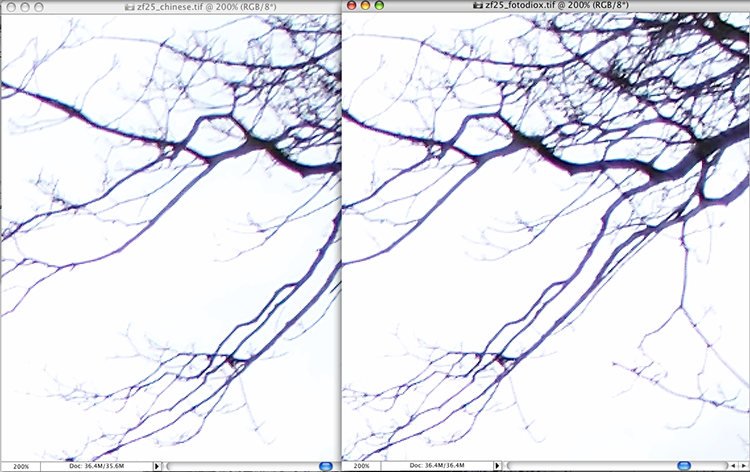Canon Full Frame Test: Zeiss ZF 25mm Distagon
Zeiss ZF 25mm f2.8 v Canon 24mm f1.4 L
Conclusion
Ultimately, these are two very closely matched. The Zeiss ZF 25mm f2.8 would have made the 24mm World Cup final had the lens been available when the review was conceived: it seems to be a fraction more capable than the Olympus 24mm f2.8; it's certainly a big step up from the AIS Nikon 24mm (f2 and f2.8), so it should by rights find a place on many Nikon bodies. But is it better than the Canon 24mm f1.4 L?
Bear in mind that the following score, a tally of comparisons made throughout the review, is a broad measure of the lenses' overall competence: it's an indicator, not a verdict – in a test this close, the right lens for you will be determined by your priorities more than each contender's abilities.
Canon 24mm f1.4 L |
Zeiss ZF 25mm f2.8 |
12 points |
13 points |
By all means review the points as they were awarded, and if you feel I've been unfair at any point, make your own adjustments. We could add an extra point or two to the Zeiss because of it's superior 3D rendering and slightly more vivid colour. Equally we could deduct a point or two for vignetting or abysmal near-field performance. Maybe the Canon deserved the vital equalising point for its handling of CA. But I think the scoreline is a fair reflection of the contest.
Is there an adaptor problem? The Zeiss' wide aperture performance was not quite up to expectations: there is unusual CA and poor close-focus performance – all the usual adaptor-related suspects. Here are 200% views of a different scene shot with the Fotodiox Pro Nikon/EOS adapter, and a thinner Chinese-made version I have used succesfully with the Nikon 28mm f2.8. As you can see, there is no discernible difference. A separate test conducted at close range confirmed that nothing is to be gained by swapping adaptors.

I believe what we are seeing is how far Zeiss has tuned this lens for the smaller Nikon DX sensor. Remember, if you're a D2X user, you can ignore all the Zone C test results and some of the Zone B images too. The ZF's lack of a floating element won't affect your close range performance becuase all the ghastly resolution loss occurs in Zone C. Perfect sense for the Nikon buyer; not much help for the Canon user.
In summary, then, the Canon 24mm f1.4 L is a wide aperture master: let's not forget that it has a huge two stop advantage over the Zeiss. The Zeiss is better throughout the aperture range centre frame, but needs f8 for critically sharp corners. However, stopped down the ZF is unrivalled at this focal length: resolution, flare, contrast, CA: the whole package comes together in the f8–f16 range and adds up to something unique, with vintage Carl Zeiss mojo.
But, and it's a big but . . . the Canon 24L is also very, very good. What you have to ask is whether that little extra bit of magic and sparkle is worth the loss of auto focus, auto aperture, and two whole stops: f1.4, f1.8, f2.0, f2.4 . . . there's a world of creative potential and light gathering in there that the Zeiss will never know. You will get more keepers more often with the Canon – no doubt; but the shots you nail with the Zeiss at f8 and f11 will be special – even on a 1Ds II.
For Nikonians (denied the loveliness of the 24L), the ZF 25mm is the best prime at this focal length by a considerable margin. If you can live without AF, it's a no brainer: buy now. However, among Canon users, I fear that all but a select cadre of small aperture purists will be tempted by the more accessible charms of the 24mm f1.4 L.

